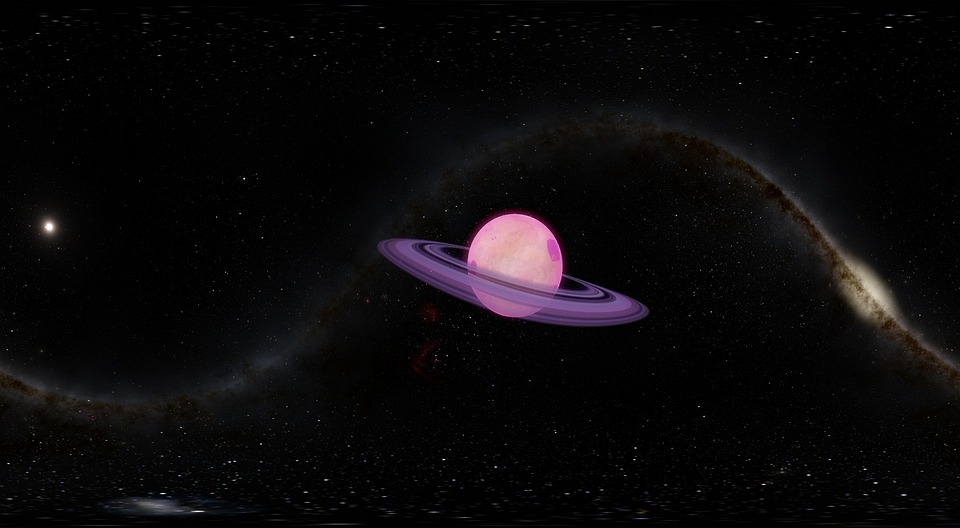Space agencies all over the world are not only hoping to explore possible habitable planets in space but also searching for alien life. Scientists recently came across another distant exoplanet that also shares similar attributes to Earth.
Express reports that the University of Canterbury astronomer and the study’s lead author Dr. Antonio Herrera Martin, and his team have discovered a new kind of exoplanet that has very similar qualities as Earth. Nicknamed “Super-Earth,” it was found near the center of the galaxy and is one of the very few exoplanets that have similarities to Earth in terms of orbit and size. Dr. Herrera Martin expressed how significant this discovery was, especially as it was a rare occurrence.
Studying the exoplanet’s host star took Dr. Herrera Martin and his team around five days, and within those five days, a five-hour distortion led them to discover the Earth-like exoplanet. They found that the host star has a mass of around 10 percent of the Sun, while the exoplanet is estimated to have a mass between that of Earth and Neptune and have an orbit with the same distance between Venus and Earth from its host star.
Because the host star of this exoplanet has a much smaller mass than the Sun, one year in the said planet would be equivalent to 617 days. Dr. Herrera Martin and his team made use of three telescopes in order to spot the exoplanet, from Chile, Australia, and South Africa alongside other instruments from Chile and South Korea.
In other news, scientists are also looking towards Mars as the next destination for space exploration and, hopefully, a place that can be colonized or inhabited by humans in the future. A new study revealed that the lava tubes found on the volcanic formation-filled region of the red planet could be used to house astronauts. After analyzing 1,500 photos taken by NASA’s Reconnaissance Orbiter of Mars, scientists found that the volcanic region, also known as Hellas Planitia found in the Southern Hemisphere of the planet, has volcanic formations that can potentially shield astronauts from the intense cosmic radiation that they could be exposed to.



 Ancient Mars may have had a carbon cycle − a new study suggests the red planet may have once been warmer, wetter and more favorable for life
Ancient Mars may have had a carbon cycle − a new study suggests the red planet may have once been warmer, wetter and more favorable for life  FDA Lifts REMS Requirement for CAR-T Cell Cancer Therapies
FDA Lifts REMS Requirement for CAR-T Cell Cancer Therapies  Neuren Pharmaceuticals Surges on U.S. Patent Win for Rare Disorder Drug
Neuren Pharmaceuticals Surges on U.S. Patent Win for Rare Disorder Drug  Eli Lilly’s Inluriyo Gains FDA Approval for Advanced Breast Cancer Treatment
Eli Lilly’s Inluriyo Gains FDA Approval for Advanced Breast Cancer Treatment  Blue Origin’s New Glenn Achieves Breakthrough Success With First NASA Mission
Blue Origin’s New Glenn Achieves Breakthrough Success With First NASA Mission  Trump Signs Executive Order to Boost AI Research in Childhood Cancer
Trump Signs Executive Order to Boost AI Research in Childhood Cancer  Senate Sets December 8 Vote on Trump’s NASA Nominee Jared Isaacman
Senate Sets December 8 Vote on Trump’s NASA Nominee Jared Isaacman  Neuralink Expands Brain Implant Trials with 12 Global Patients
Neuralink Expands Brain Implant Trials with 12 Global Patients  Kennedy Sets September Deadline to Uncover Autism Causes Amid Controversy
Kennedy Sets September Deadline to Uncover Autism Causes Amid Controversy  SpaceX Starship Test Flight Reaches New Heights but Ends in Setback
SpaceX Starship Test Flight Reaches New Heights but Ends in Setback  Is space worth the cost? Accounting experts say its value can’t be found in spreadsheets
Is space worth the cost? Accounting experts say its value can’t be found in spreadsheets  Cogent Biosciences Soars 120% on Breakthrough Phase 3 Results for Bezuclastinib in GIST Treatment
Cogent Biosciences Soars 120% on Breakthrough Phase 3 Results for Bezuclastinib in GIST Treatment  Trump and Merck KGaA Partner to Slash IVF Drug Costs and Expand Fertility Coverage
Trump and Merck KGaA Partner to Slash IVF Drug Costs and Expand Fertility Coverage  Trump Administration to Launch Autism Initiatives Targeting Acetaminophen Use and New Treatment Options
Trump Administration to Launch Autism Initiatives Targeting Acetaminophen Use and New Treatment Options 































